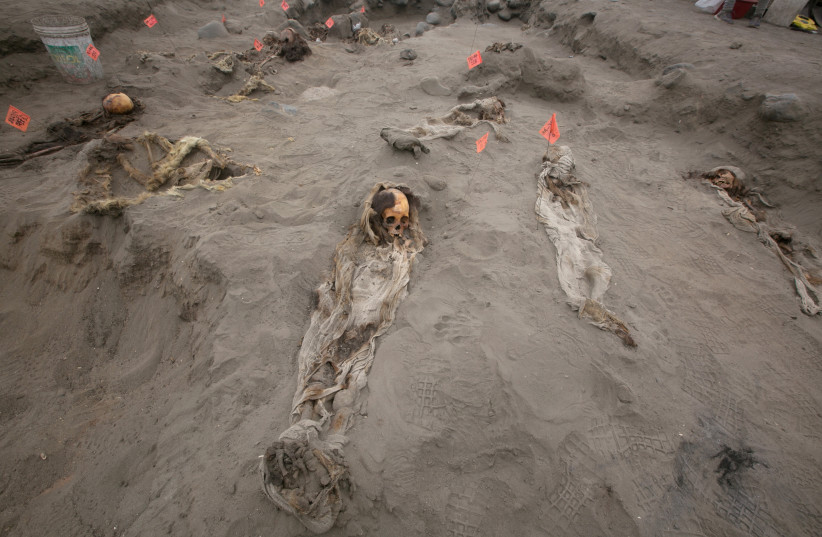The remains of 76 children were found by archaeologists at Pampa La Cruz in Peru last week with signs that they may have had their hearts removed in some form of child sacrifice, according to Live Science.
"They were buried on an extended position, with the feet toward the east," Gabriel Prieto told Live Science.
"They were buried on top of an artificial mound."
Gabriel Prieto
Over the last few years, archaeological excavations in Pampa La Cruz revealed 323 possible child sacrifices all of which showed the same signs of removed hearts. At another nearby site called Las Llamas, 137 adults and children were also found in the same way.
While radiocarbon dating still needs to be done on the newly-found remains, archaeologists expect them to date similarly to the other victims found in Pampa La Cruz - somewhere between the years 1100 and 1200.
This dating would mean that the victims were of the Chimu people - who inhabited the area at the time.
Would it make sense for the Chimu people to practice child sacrifice?
According to Prof. Richard Sutter of Purdue University who is part of the archaeological team, the other people who lived in the area at the time practiced human sacrifices, so it would not be unreasonable to expect the Chimu people to do the same.
Chimu culture was agriculture-based, and they were known for their work with textiles, gold, silver and copper.

